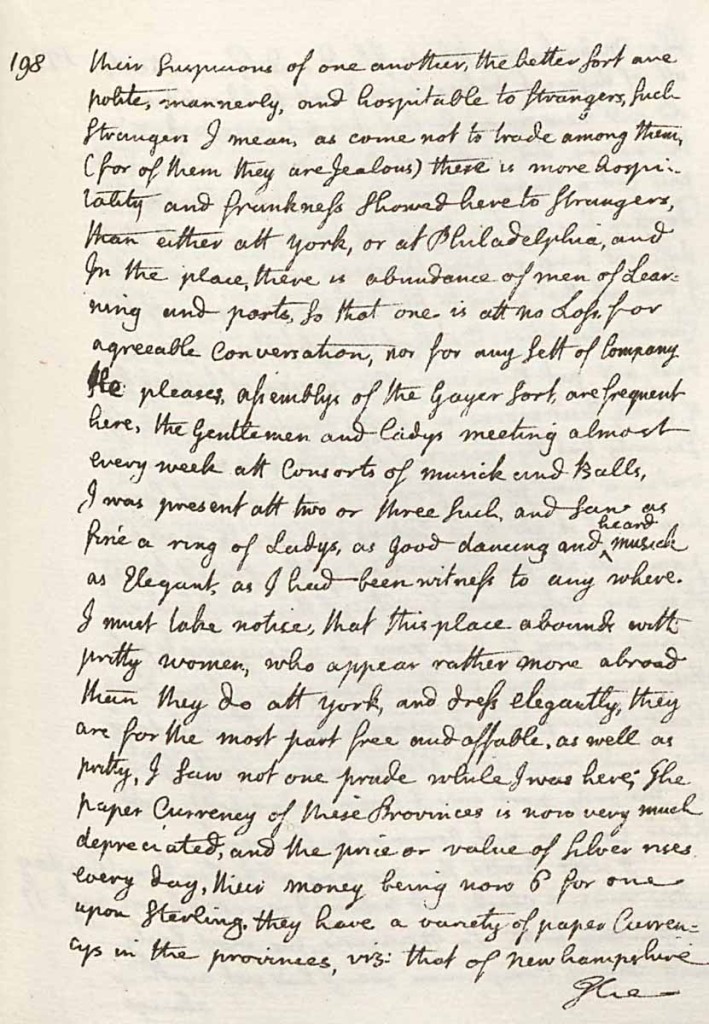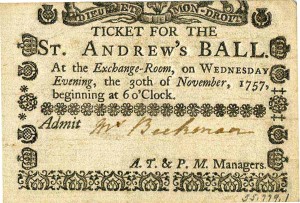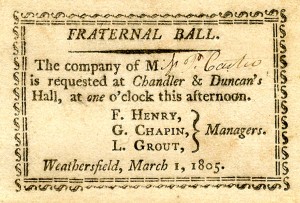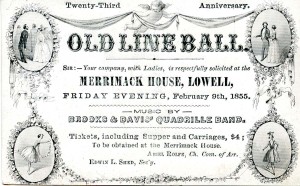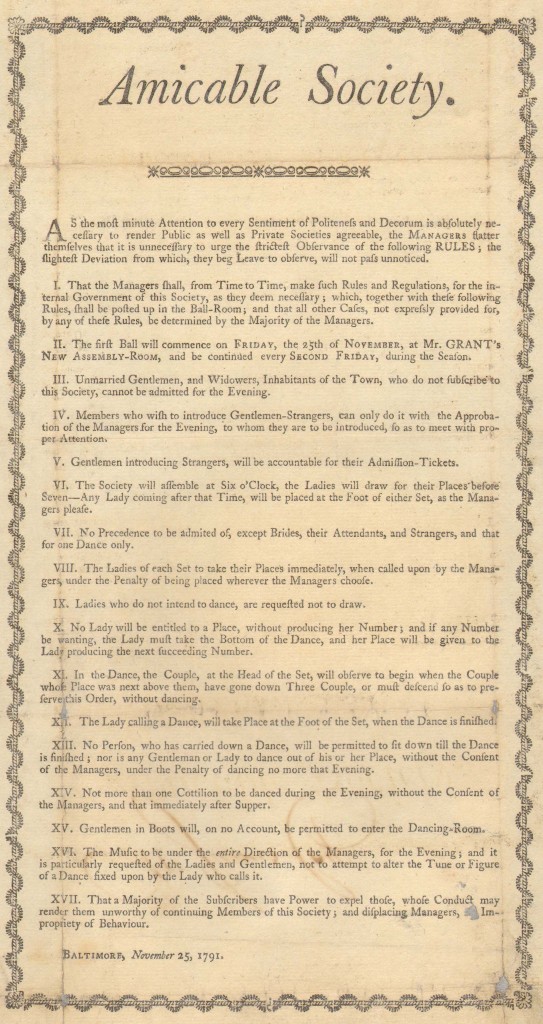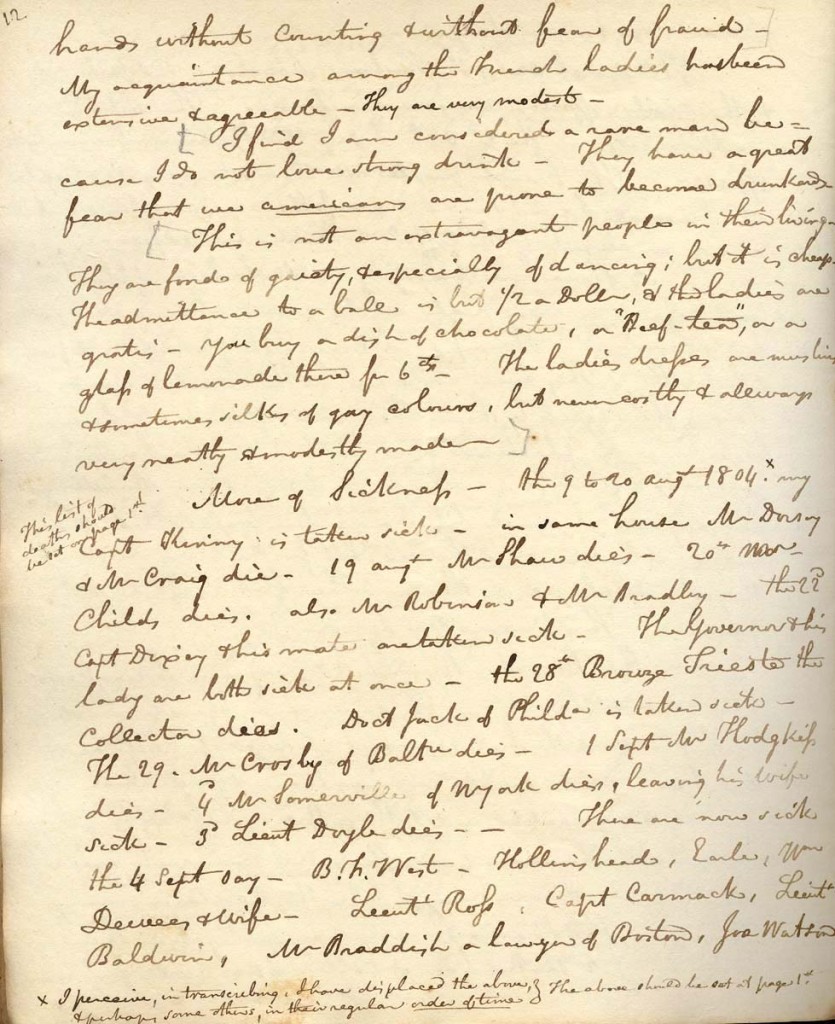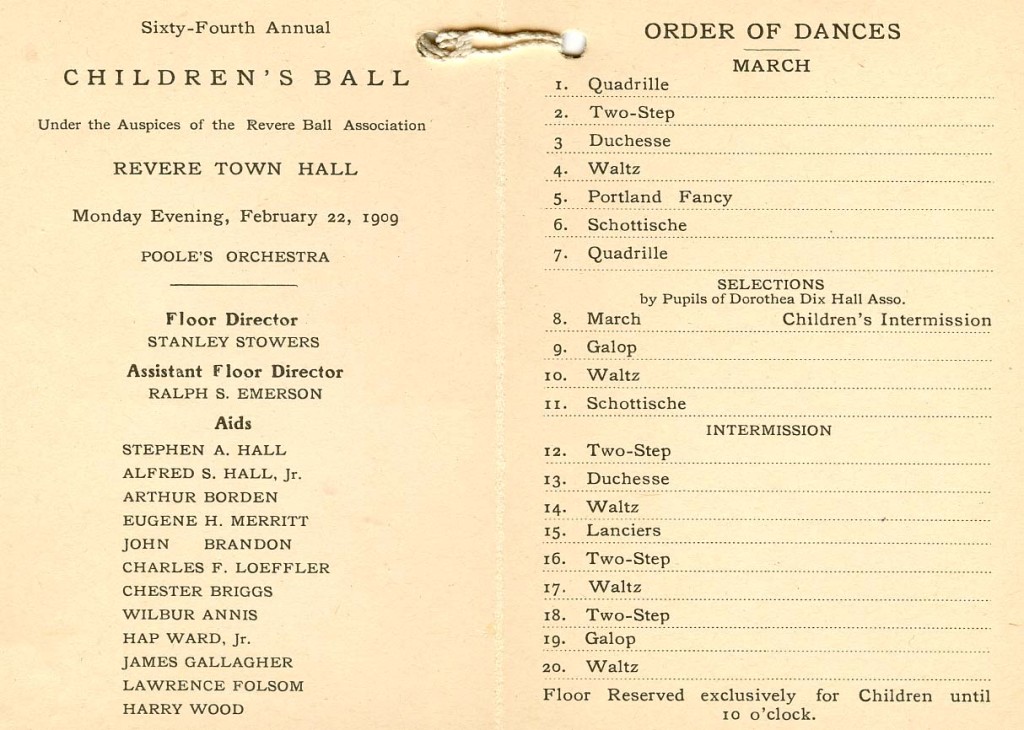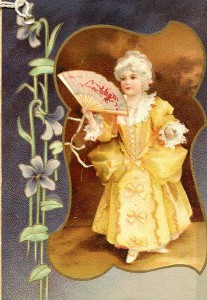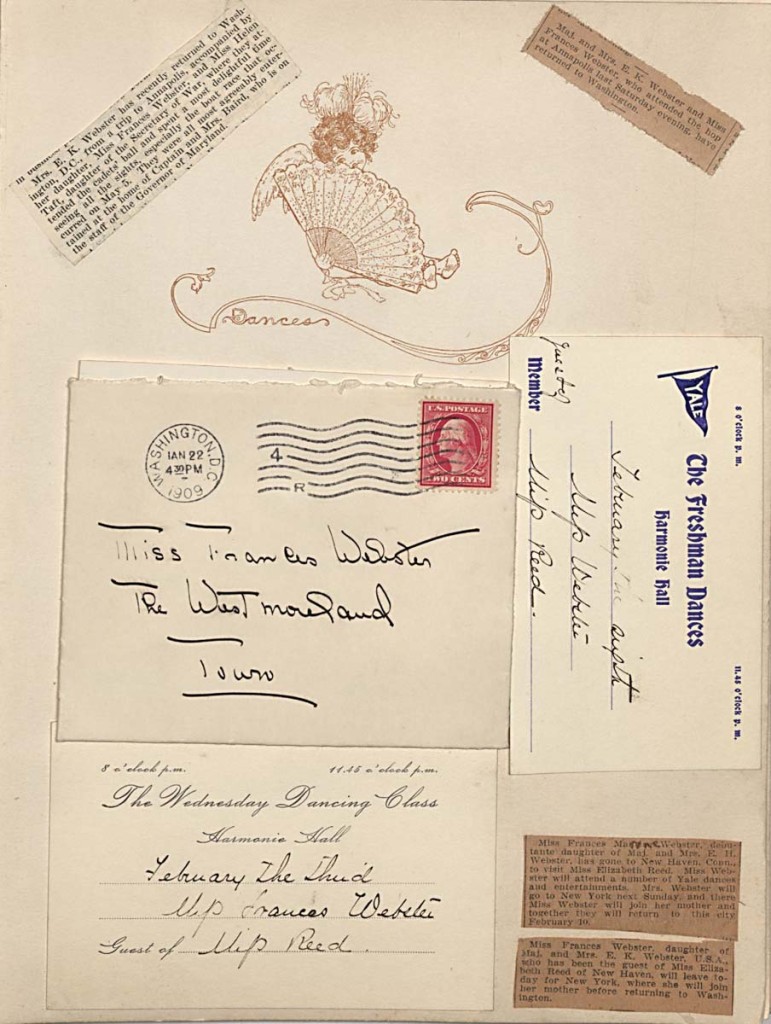At the Dance
Since few private homes in colonial America were large enough to include a ballroom, dances were frequently held in public spaces such as assembly rooms, courthouses, market buildings, and taverns. People subscribed to, or paid for, a series of public dances over a season. A management committee posted in advance the dates and locations of the dances, advertised rules for behavior, and organized dances into the early 1900s. Suppers served as an intermission, a source of much-needed respite and sustenance, in both private and public balls. After dining on a variety of meats, fruits, pastries, and beverages, refreshed guests continued dancing. The second round featured informal dances requiring little precision, a welcome change for those who had imbibed alcohol.
Hamilton’s Itinerarium
Doctor Alexander Hamilton
1744
Privately printed, St. Louis, Missouri; 1907
E162 H21a Printed Book and Periodical Collection, Winterthur Library
Dr. Alexander Hamilton, a physician in Maryland, wrote this travel account in the 1700s and observed first-hand the era’s dance customs. While in Boston in 1744, the doctor commented on the pretty women and noted that “assemblys of the Gayer sort, are frequent here; the Gentlemen and ladys meeting almost every week att Consorts of musick and Balls. I was present att two or three such, and seen as fine a ring of Ladys, as good dancing and heard musick as Elegant, as I had been witness to any where.”
Ticket for St. Andrew’s Ball
United States; 1757
55.779.1 Joseph Downs Collection of Manuscripts and Printed Ephemera, Winterthur Library
Ticket for Fraternal Ball
Weathersfield, Vermont; 1805
88×46 Joseph Downs Collection of Manuscripts and Printed Ephemera, Winterthur Library
Ticket for Old Line Ball
Lowell, Massachusetts; 1855
80×124.4 Joseph Downs Collection of Manuscripts and Printed Ephemera, Winterthur Library
Tickets for public balls were sent out one or two weeks before the event. People paid in advance for dances and had to show their tickets to be admitted. Along with dance cards, tickets were frequently kept as souvenirs.
Broadside for Amicable Society
Baltimore, Maryland; 1791
52.26 Joseph Downs Collection of Manuscripts and Printed Ephemera, Winterthur Library
This 1791 broadside lists the 17 rules set by managers for a dance series in Baltimore, Maryland. Managers also played the role of host by introducing partners and selecting music. Ever mindful of proper behavior and dress, they promised to turn away gentlemen wearing boots and to penalize people for dancing out of place.
Diary of John F. Watson’s Journey to New Orleans & Observations there in 1804-5
John Fanning Watson
New Orleans, Louisiana; 1804-05
58×29.1 Joseph Downs Collection of Manuscripts and Printed Ephemera, Winterthur Library
On a business trip to New Orleans in 1804, Philadelphian John Fanning Watson recorded his commentary on the life and customs there in his journal. He wrote “This is not an extravagant people in their living. They are fond of gaiety, & especially of dancing; but it is cheap. The admittance to a ball is but ½ Dollr & the ladies are gratis – You buy a dish of chocolate, or “Beef-tea”, or a glass of lemonade there for 6 cts – The ladies dresses are muslin & sometimes silk of gay colours, but never costly & always very neatly & modestly made.”
Dance cards
Fashionable in the mid 1800s until World War I, dance cards, generally in the form of a booklet, listed the organizers and the order of dances. With a small pencil attached by a cord or ribbon to jot down names of partners, they were easily worn around women’s wrists.
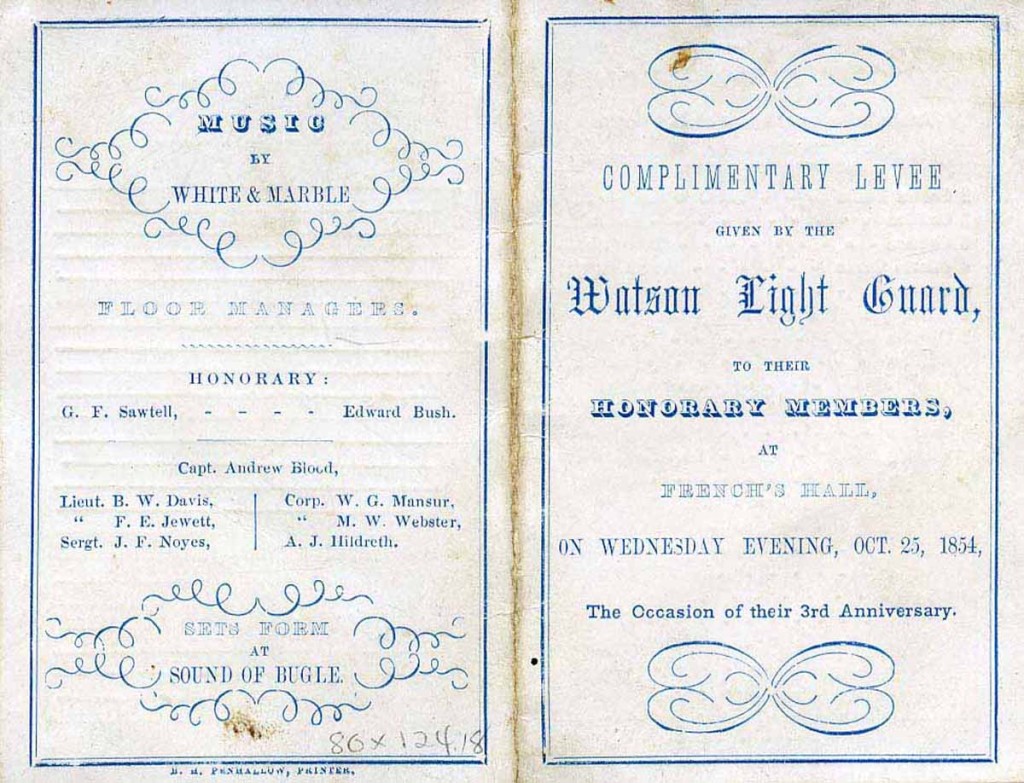
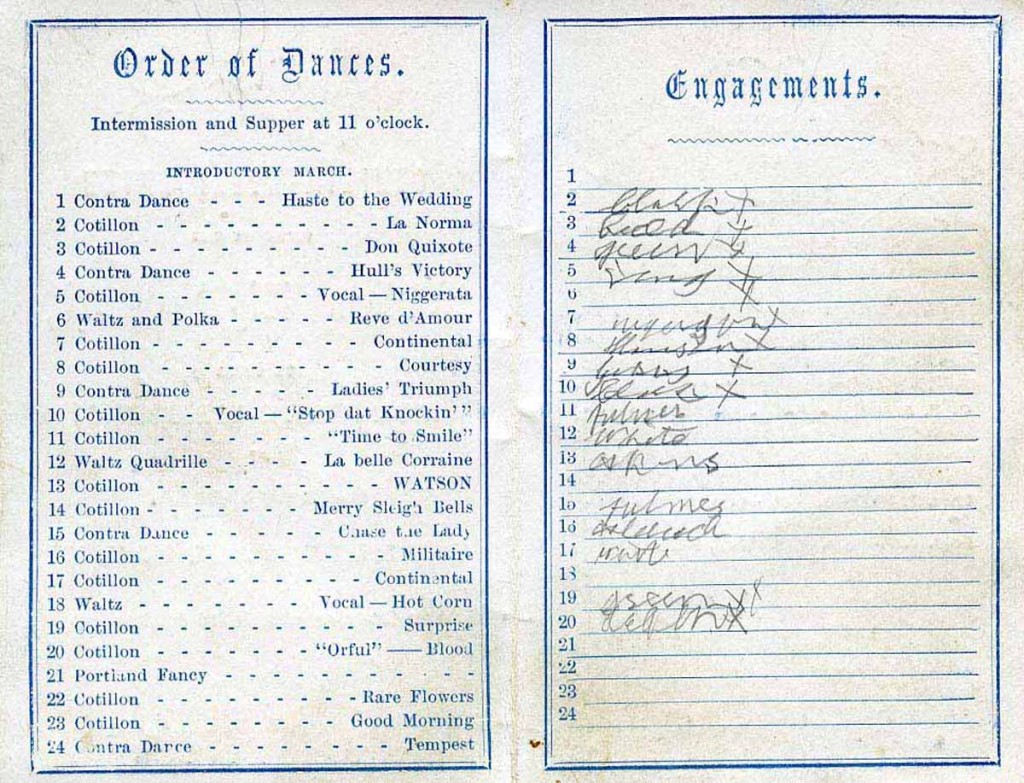 Dance card for Watson Light Guard Levee
Dance card for Watson Light Guard Levee
Lowell, Massachusetts; 1854
80×124.18 Joseph Downs Collection of Manuscripts and Printed Ephemera, Winterthur Library
The holder of this 1854 dance card had partners for most of the evening’s dances. The order of contra dances, cotillons, waltzes, and polkas was a typical one in the 1850s. The popular cotillon (or cotillion) consisted of a variety of round dances for any number of people seated in a circle offering time for socializing.
Dance card for Children’s Ball (cover at left)
Revere Ball Association
Revere, Massachusetts; 1909
10×67.3 Joseph Downs Collection of Manuscripts and Printed Ephemera, Winterthur Library
In addition to an annual Children’s Ball, the Revere Ball Association also organized dances for adults, both honoring the town of Revere’s separation from neighboring Chelsea in 1846.
Her Memory Book
Kept by Frances Marvin Webster
Washington, D.C.; 1908-09
03×83 Joseph Downs Collection of Manuscripts and Printed Ephemera, Winterthur Library
Washington, D.C. debutante Webster saved mementoes from her 1908-1909 season in this specially designed scrapbook. As a classmate of President Theodore Roosevelt’s daughter Ethel, she was twice invited to the White House for a reception and a small dance. The “Dances” page features a newspaper clipping of her return from a cadets’ ball in Annapolis accompanied by another classmate Helen Taft, daughter of future President William Taft, with other clippings and invitations related to dances at Yale University.


